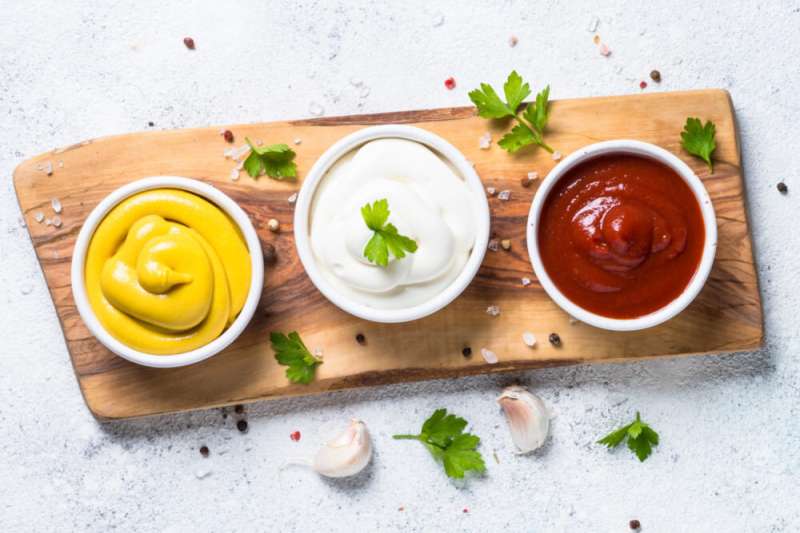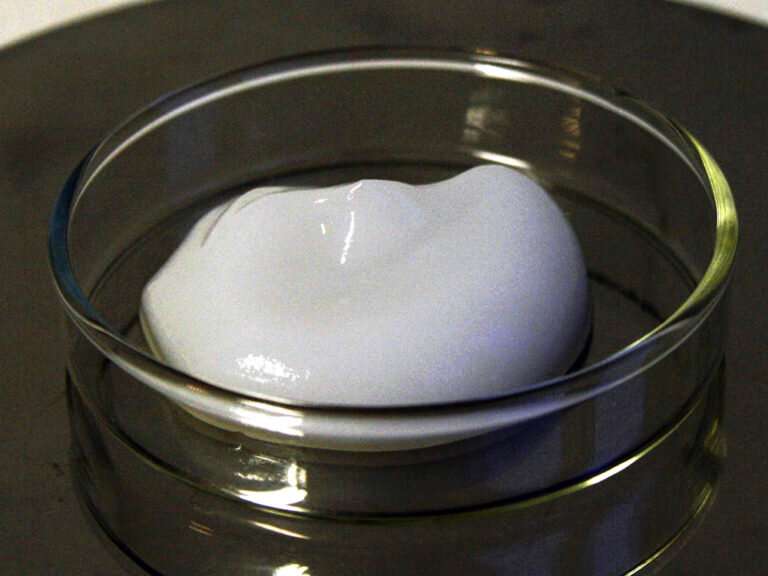Trees and plants could become new additives in 'light' food products

More and more foods are now available in light versions with reduced fat.
"Fat contributes structure, taste and feeling in our mouth. When we reduce or remove the fat, it needs to be replaced with additives, or fat substitutes, for the product to have consumer appeal," says Ragnhild Aaen, a Ph.D. candidate at NTNU's Department of Chemical Engineering.
Her doctoral degree involved working on a major project led by RISE PFI where this topic has been a theme.
Light mayonnaise is an example of a food that needs additives. It has a much lower oil content than regular mayonnaise, so starch has to be added to achieve good stability and consistency.
The RISE PFI project has proven that nanocellulose can work for this purpose.
"Nanocelluloses form gel networks that are insoluble in water, and that effectively stabilize emulsions and contribute to good structure in the mayonnaise. Nanocelluloses have no taste or color, and they don't smell. The cellulose threads are so thin that they don't feel lumpy in the food," says Aaen.
New type of additive
Ragnhild Aaen and researchers at NTNU and RISE PFI, a research institute that works with processes and products based on lignocellulose, are studying the possibility of replacing current additives with plant-based nanocelluloses.
"Nanocelluloses are super-thin threads, or fibrils, which consist of cellulose molecules. The fibrils have a unique ability to create strong networks. In plants and trees, they give strength to the cell walls so that thin stems can bear heavy flowers and huge trees can stand upright in strong winds," she says.
The NTNU researcher extracted nanocellulose from wood pulp. The wood pulp is passed through a high-pressure homogenizer which tears the fibrils apart.
"We've found that different types of nanocellulose are useful for different applications. Where the cellulose comes from or what plant it's extracted from isn't critical. However, various pre-treatments before homogenization make more of a difference in making a wide variety of types, and to create the desired properties. Vegetables contain nanocellulose too," says Aaen.

Fewer additives
As to whether the current use of additives is questionable, Aaen says there are strict rules for the use of additives in foods.
"One of the advantages of nanocellulose, compared to today's additives, is that nanocellulose mostly consists of water and is probably cheaper. You only need a very small amount, and access to nanocellulose is of course not a problem," she says.
"Cellulose is a renewable resource in addition to being calorie free. This is about fiber and could even be good for your health."
But the public is still fairly skeptical about nanoplastics and nanoparticles in general.
"Cellulose and many cellulose derivatives are already approved for use in food," says Aaen. In terms of the risks of nanoparticles in food, "new products have to go through an approval procedure. The question is how the new product behaves in the intestinal system."
"A lot of people are now doing research to investigate the effects of various nanocelluloses as food additives. I think it's unlikely that they will have adverse effects. A lot of the food we eat contains natural cellulose, and fiber is considered beneficial for digestion," she said.
She believes it's very likely that industrially produced nanocelluloses will eventually become food additives.
Aaen knows we still have to do more research before we have a thorough understanding of how to use different types of nanocelluloses—from cooking methods to the interactions between cellulose and food ingredients—so we can identify the right nanocellulose for individual foods.
Provided by Norwegian University of Science and Technology



















